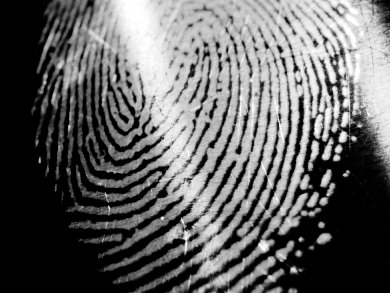The strained four-membered ring system, S2N2, quickly polymerises to (SN)x in the presence of fingerprints. This polymer can then be detected and a fingerprint visualised.
Paul F. Kelly and colleagues, UK, discovered that the polymerisation still occurs when the fingerprints are washed off, either by wiping a surface or by an explosive blast. The polymerisation is triggered by a surface effect, brought about by interaction of the chemicals in the fingerprint, before they are removed. As long as the print has existed long enough to bring this about before washing off, the signature will be present and imaging is possible. The process is based on the interaction of S2N2 vapour with the surface. The crucial point is that a vapour can reach areas of a surface that are not accessible to solids and liquids, such as the crumpled remains of an explosive device.
Work is ongoing to develop the method for use on real life samples.
Photo: (C) PhotoDisc, Inc./Getty Images
- Polymerisation of S2N2 to (SN)x as a tool for the rapid imaging of fingerprints removed from metal surfaces
S. M. Bleay, P. F. Kelly, R. S. P. King,
J. Mater. Chem. 2010.
DOI: 10.1039/C0JM02724C



